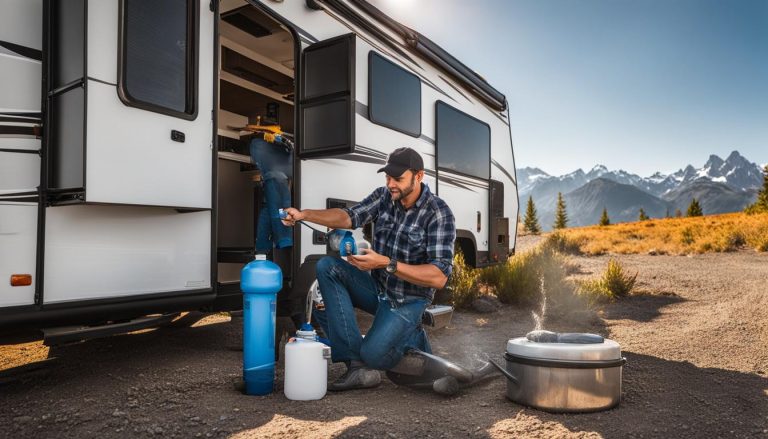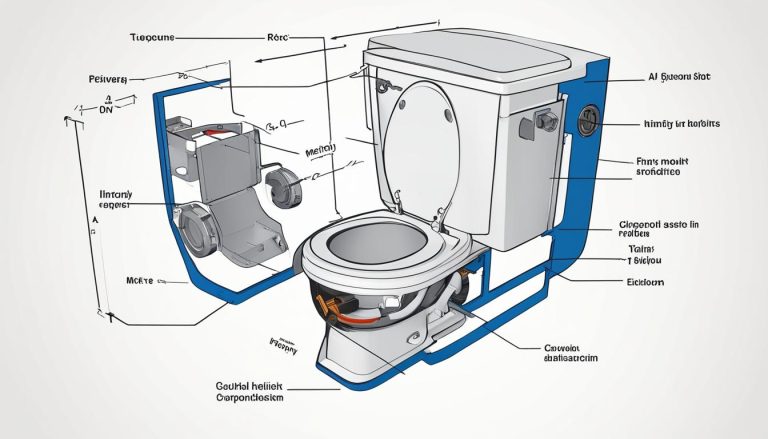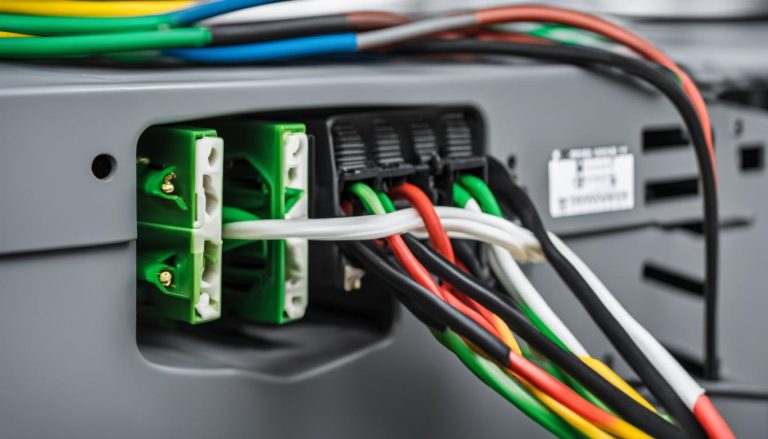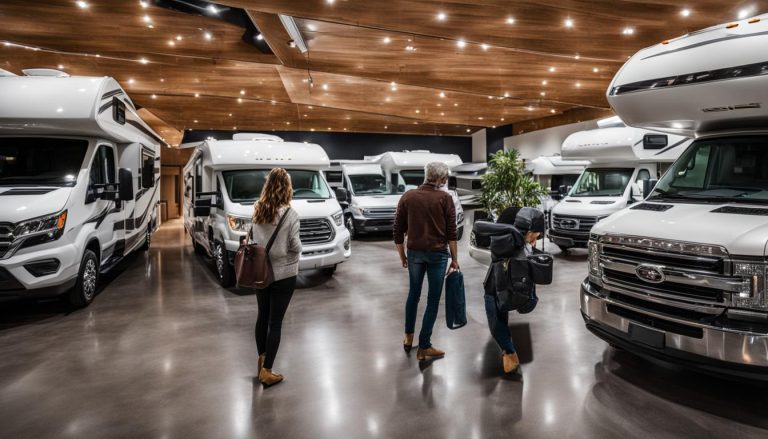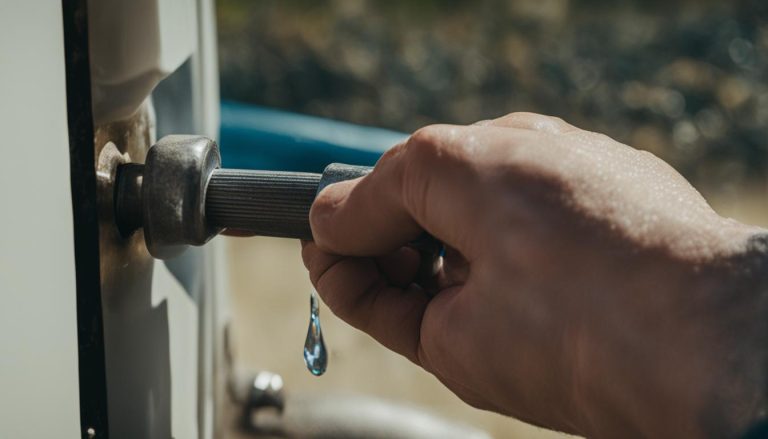Boost Your RV Fridge’s Coolness Easily!
gorvlifestyle.com and its partners may earn a commission if you purchase a product through one of our links
If your RV refrigerator is not cooling properly, there are several steps you can take to boost its coolness and ensure optimal food preservation during your travels. By following these tips, you can enhance your RV fridge’s efficiency and make it colder without spending a lot of money on repairs or professional help. Let’s explore some effective techniques for improving the cooling of your RV refrigerator.
Key Takeaways:
- Check the leveling and air circulation of your RV to optimize the cooling performance of your refrigerator.
- Inspect and adjust the temperature sensors and thermistors to regulate the temperature effectively.
- Unblock the exhaust vent and clean any dust or obstructions to ensure proper airflow.
- Consider road conditions and electrical load to prevent disruptions in the cooling process.
- Follow general cooling tips to maximize the performance of your RV refrigerator.
Check the Leveling and Air Circulation
When your RV refrigerator is not cooling properly, the first thing you should check is the leveling of your RV. A perfectly leveled RV is crucial for the proper functioning of the refrigerator and optimizing cooling performance. If your RV is not leveled, it can affect the circulation of coolant, leading to inadequate cooling.
Ensure that your RV is parked on level ground to improve the cooling performance of your refrigerator.
This image illustrates the importance of leveling your RV for optimal cooling efficiency. By parking your RV on level ground, you allow the coolant to flow smoothly and evenly, ensuring that your refrigerator can reach and maintain the desired temperature.
“Proper leveling of your RV is essential for optimal refrigerator cooling performance. Ensuring that your RV is parked on level ground allows for efficient air circulation and consistent cooling throughout the refrigerator.”
Why is Leveling Important?
Leveling your RV is necessary for maintaining an even distribution of the coolant within the refrigerator’s cooling system. When the RV is not level, the coolant may pool in one area and not circulate properly, resulting in inconsistent cooling.
How to Level Your RV
- Find a level spot to park your RV.
- Use a bubble level or leveling app to determine if your RV is level. Place the level on the floor of your RV and adjust accordingly.
- If your RV is not level, use leveling blocks or ramps to raise the low side until the RV is level.
- Ensure that all appliances, including the refrigerator, are level and secure.
| Benefits of Leveling Your RV | Consequences of Improper Leveling |
|---|---|
|
|
By ensuring that your RV is properly leveled, you can maximize the cooling effectiveness of your refrigerator, prolong its lifespan, and prevent food spoilage. Taking the time to level your RV is a simple yet crucial step in maintaining a colder and more efficient RV fridge.
Check Temperature Sensors and Thermistor
Temperature sensors and thermistors are essential components that help regulate the temperature of your RV refrigerator. When these sensors are not functioning properly, they can greatly affect the cooling performance of your motorhome fridge. It’s important to periodically check and maintain these sensors to ensure optimal cooling efficiency.
Start by examining the temperature sensor to ensure it is correctly connected to the fin. Sometimes, a loose connection can disrupt the sensor’s ability to accurately measure the temperature. If needed, secure the sensor tightly to the fin to improve its performance. Additionally, you can try gently spinning the temperature sensor to adjust the refrigerator’s temperature settings.
Regularly inspecting and adjusting your RV refrigerator’s temperature sensors and thermistors can help improve cooling in your motorhome fridge and keep your food fresh and properly preserved during your travels.
Unblock the Exhaust Vent and Check Coolants
A blocked exhaust vent can prevent hot air from escaping the RV refrigerator, leading to inadequate cooling. To optimize rv refrigerator performance and enhance cooling in your camper fridge, it is essential to unblock the exhaust vent and ensure proper airflow. Follow these simple steps to resolve this issue:
- Step 1: Remove the vent cover
- Step 2: Inspect for any obstructions
- Step 3: Clean any dust or impurities
By removing the vent cover, you can visually inspect if there are any physical obstructions, such as leaves, debris, or insect nests, blocking the exhaust vent. Cleaning any dust or impurities using a soft brush or compressed air can help restore proper airflow and optimize cooling performance in your RV refrigerator.
This simple maintenance task can significantly improve the cooling efficiency of your camper fridge, ensuring your food stays fresh and cold during your camping adventures.
| Benefits of Unblocking the Exhaust Vent and Checking Coolants |
|---|
| Improved cooling efficiency |
| Prevents inadequate cooling |
| Preserves food freshness |
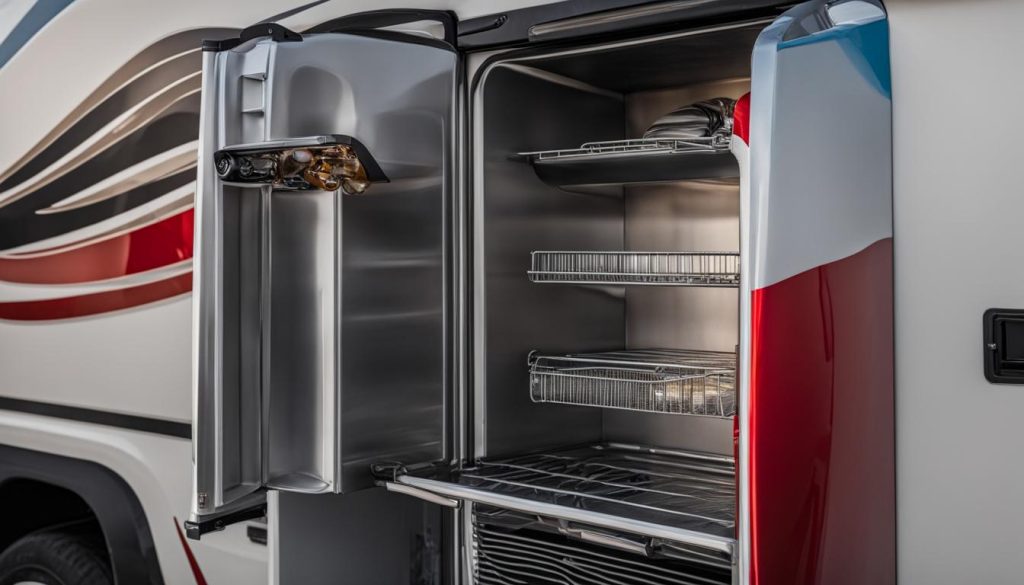
Consider Road Conditions and Electrical Load
Road conditions and the electrical load in your RV can significantly affect the cooling performance of your refrigerator. When you drive on steep terrain or encounter bumps in the road, it can disrupt the flow of the ammonia mixture and result in inadequate cooling. To ensure optimal cooling efficiency, there are a few key considerations to keep in mind.
Position the Cooling Unit and Supply Vent
One way to mitigate the impact of road conditions on your RV refrigerator’s cooling performance is to position the cooling unit and supply vent correctly. By tilting these components at an angle of up to 6 degrees maximum, you can facilitate the smooth flow of the ammonia mixture. This allows for better cooling even when you’re traveling on uneven or bumpy roads.
Reduce Electrical Load
It’s important to be mindful of the electrical load in your RV while your refrigerator is running. When the electrical system is under heavy load, it may strain the refrigerator’s cooling components and affect its performance. To minimize this, consider reducing the use of other high-powered electrical appliances while the refrigerator is in operation. This can help ensure that an adequate amount of power is dedicated to the refrigerator, maximizing its cooling capability.
By taking these factors into account and making the necessary adjustments, you can optimize the cooling performance of your RV refrigerator, even when faced with challenging road conditions and electrical load.
Cooling Tips for RV Refrigerators
Aside from the specific troubleshooting and adjustments mentioned earlier, here are some general tips to help you improve the cooling performance of your RV refrigerator:
-
Keep the fridge well-stocked: A fully stocked refrigerator typically maintains a steady temperature more effectively. Fill empty spaces with water bottles or other non-perishable items to create thermal mass, aiding in temperature regulation.
-
Organize and pack efficiently: Proper organization inside the fridge can improve airflow and ensure even cooling. Store items in a way that allows circulating air to reach them, preventing hot spots and optimizing cooling efficiency.
-
Minimize door openings: Frequent opening of the refrigerator door can cause cold air to escape, resulting in temperature fluctuations. Try to plan ahead and retrieve all necessary items in one go, reducing the duration of door openings and helping maintain consistent cooling.
-
Avoid storing hot or warm items: Placing hot or warm items directly into the refrigerator can strain its cooling system. Allow foods to cool to room temperature before placing them in the fridge to reduce the workload on the cooling unit.
-
Regularly defrost and clean: Ice build-up can hinder airflow and cooling performance. Follow the manufacturer’s guidelines for defrosting the refrigerator regularly. Additionally, clean the interior and seals to prevent dirt or debris from impacting cooling efficiency.
By implementing these simple cooling tips, you can enhance the performance of your RV refrigerator and ensure your food stays fresh throughout your travels.
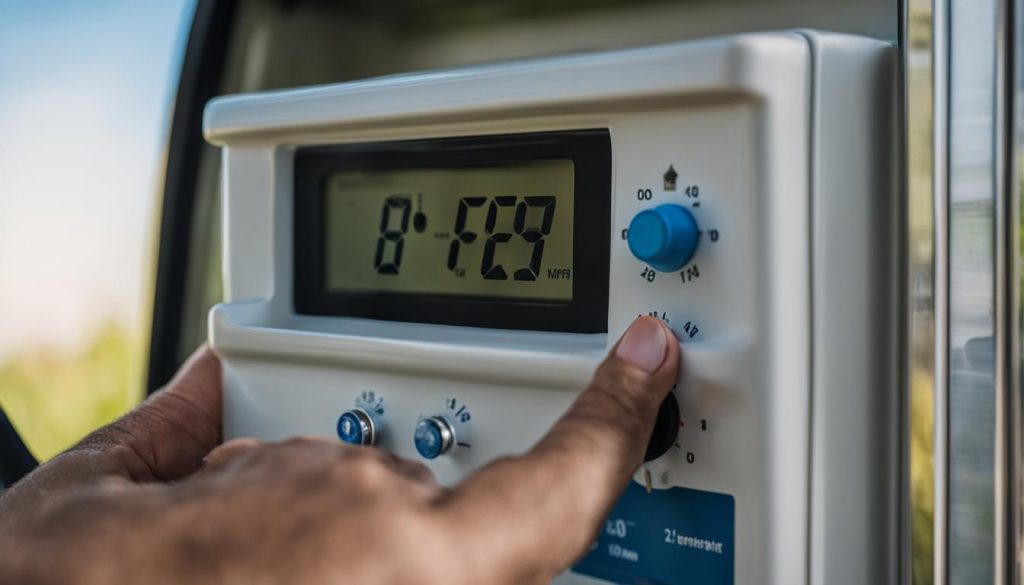
| Tips for Improving RV Refrigerator Cooling |
|---|
| Keep the fridge well-stocked |
| Organize and pack efficiently |
| Minimize door openings |
| Avoid storing hot or warm items |
| Regularly defrost and clean |
Conclusion
By implementing these effective techniques and following the troubleshooting tips mentioned above, you can significantly enhance the cooling performance of your RV refrigerator. Proper leveling of your RV and ensuring optimal air circulation are essential to promoting efficient cooling. Regular maintenance of temperature sensors and thermistors, as well as unblocking the exhaust vent, can further optimize the cooling process.
It’s also crucial to check the coolants regularly and consider the impact of road conditions and electrical load on your RV refrigerator’s cooling efficiency. With these proactive measures in place, you can enjoy cold, fresh food during your camping trips, providing a hassle-free and enjoyable experience for you and your travel companions.
Remember to follow general cooling tips for RV refrigerators, such as avoiding overloading the refrigerator, organizing the contents properly to facilitate airflow, and keeping the refrigerator door closed as much as possible to maintain a consistent temperature inside.
Take these steps to make your RV fridge colder and enhance its cooling performance, ensuring that your food stays fresh and safe throughout your adventures on the road. Have a fantastic time exploring the beautiful outdoors while relishing the convenience and functionality of a perfectly cooled RV refrigerator!
FAQ
How can I make my RV refrigerator colder?
To make your RV refrigerator colder, ensure that your RV is leveled, check the temperature sensors and thermistor, unblock the exhaust vent, consider road conditions and electrical load, and follow general cooling tips.
Why is leveling important for RV refrigerators?
Leveling your RV is essential for the proper functioning of the refrigerator. If your RV is not leveled, it can affect the circulation of coolant, resulting in inadequate cooling.
How do temperature sensors and thermistors affect RV refrigerator cooling?
Temperature sensors and thermistors regulate the temperature of your RV refrigerator. If they are not functioning properly, it can affect the cooling performance. Make sure they are correctly connected and adjust the temperature sensor as needed.
How can I unblock the exhaust vent of my RV refrigerator?
To unblock the exhaust vent, remove the vent cover and check for any obstructions. Clean any dust or impurities that may be blocking the vent to ensure proper airflow and cooling performance.
How do road conditions and electrical load impact RV refrigerator cooling?
Driving on steep terrain or encountering bumps can disrupt the flow of the ammonia mixture in the cooling unit, affecting cooling performance. Position the cooling unit and supply vent at an angle of up to 6 degrees maximum to facilitate smooth flow.
What are some general cooling tips for RV refrigerators?
Some general cooling tips include avoiding overpacking the refrigerator, keeping it well-ventilated, minimizing door openings, using refrigerator fans, and considering insulation enhancements.
How can I enhance the cooling performance of my RV refrigerator?
To enhance cooling performance, make sure your RV is leveled, check and maintain temperature sensors and thermistors, unblock the exhaust vent, consider road conditions and electrical load, and follow general cooling tips.


